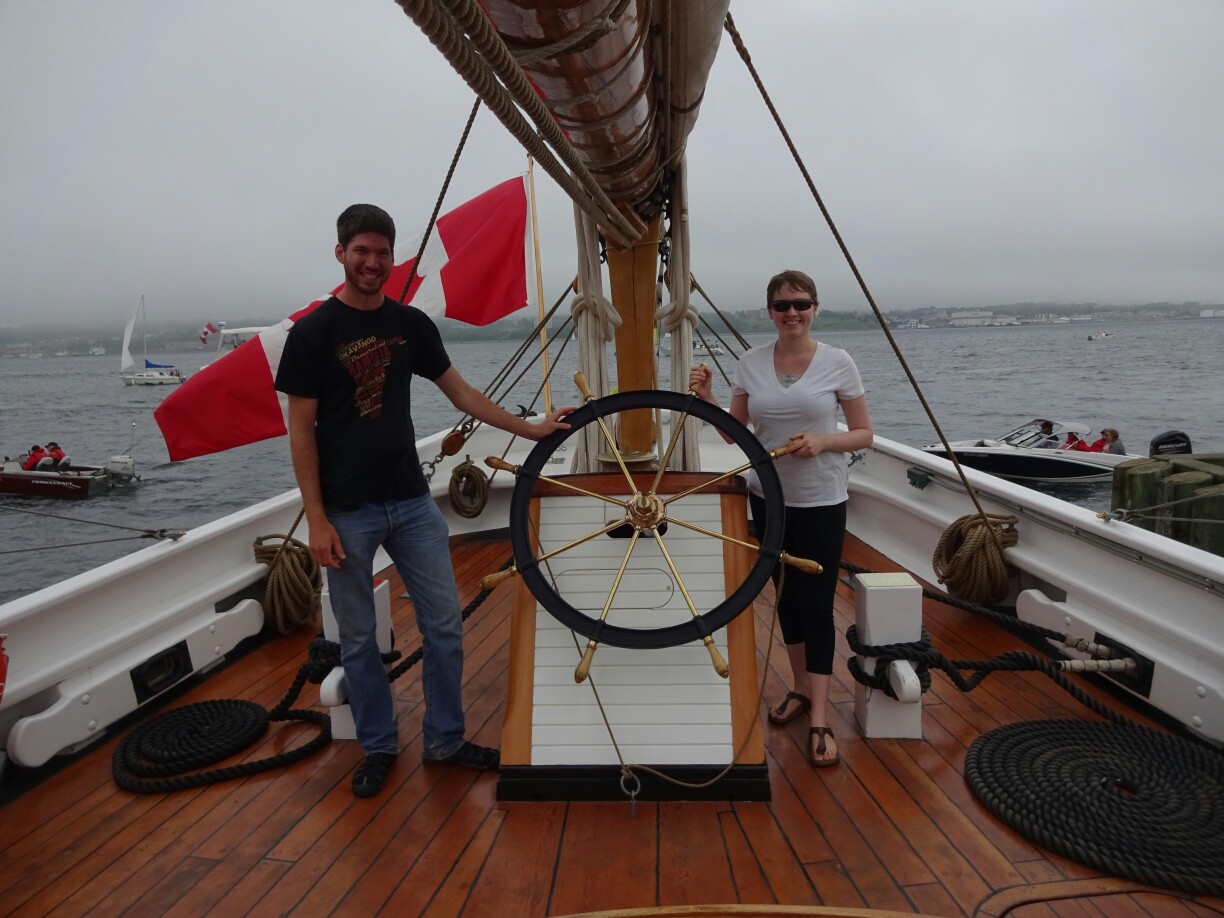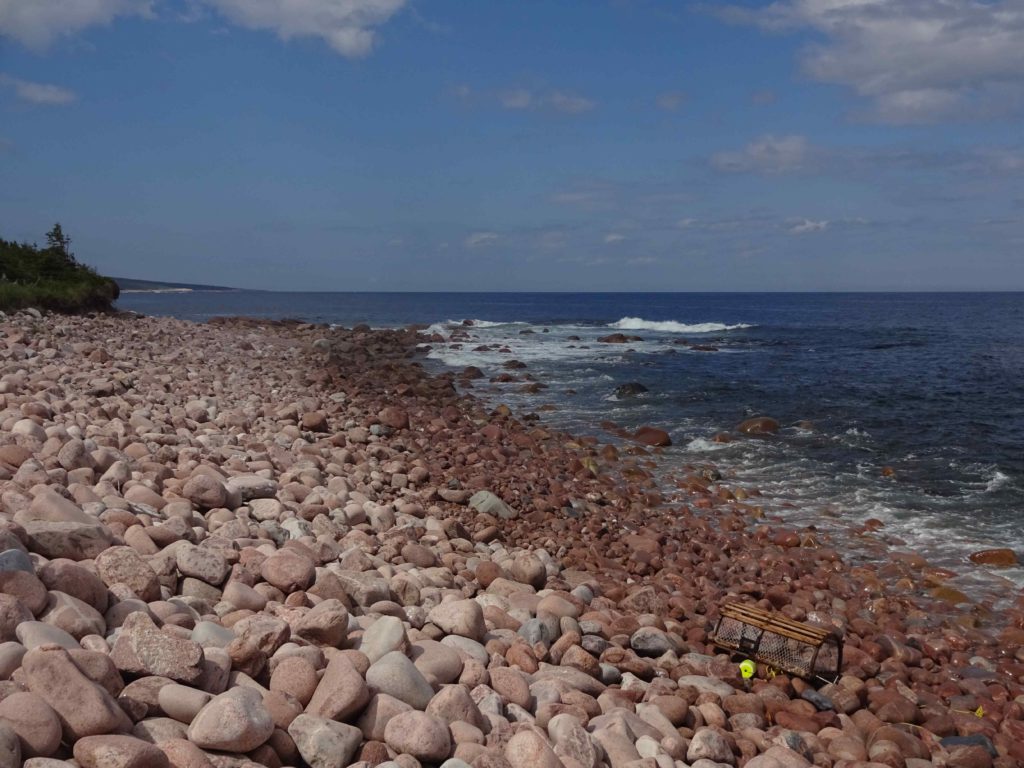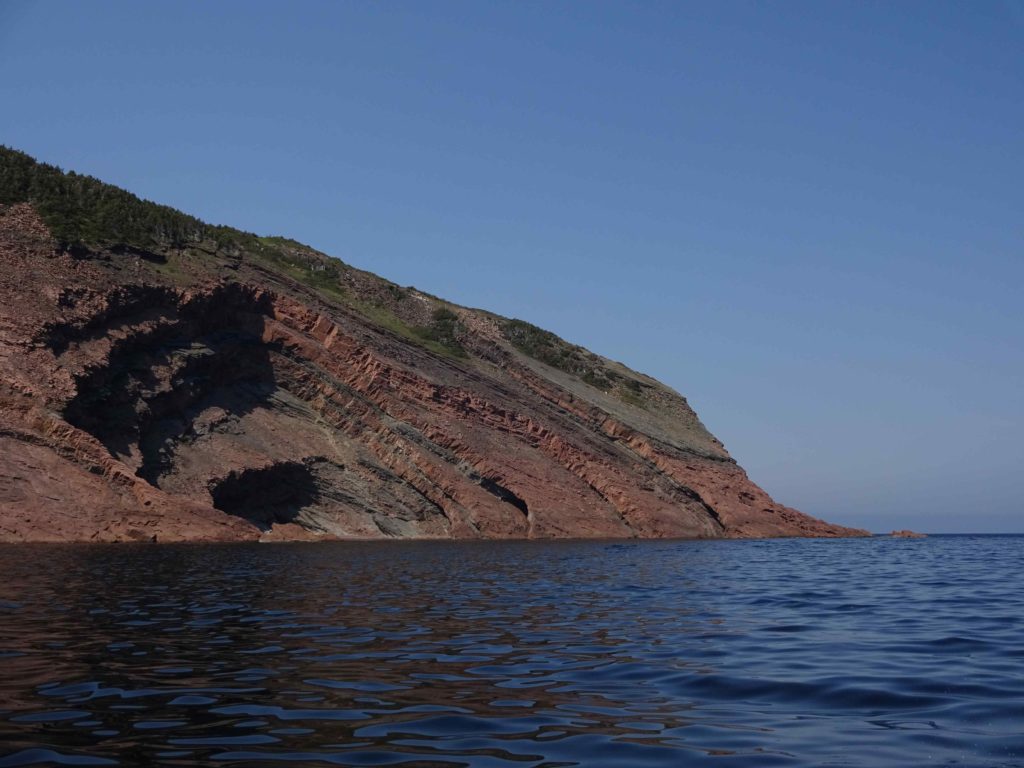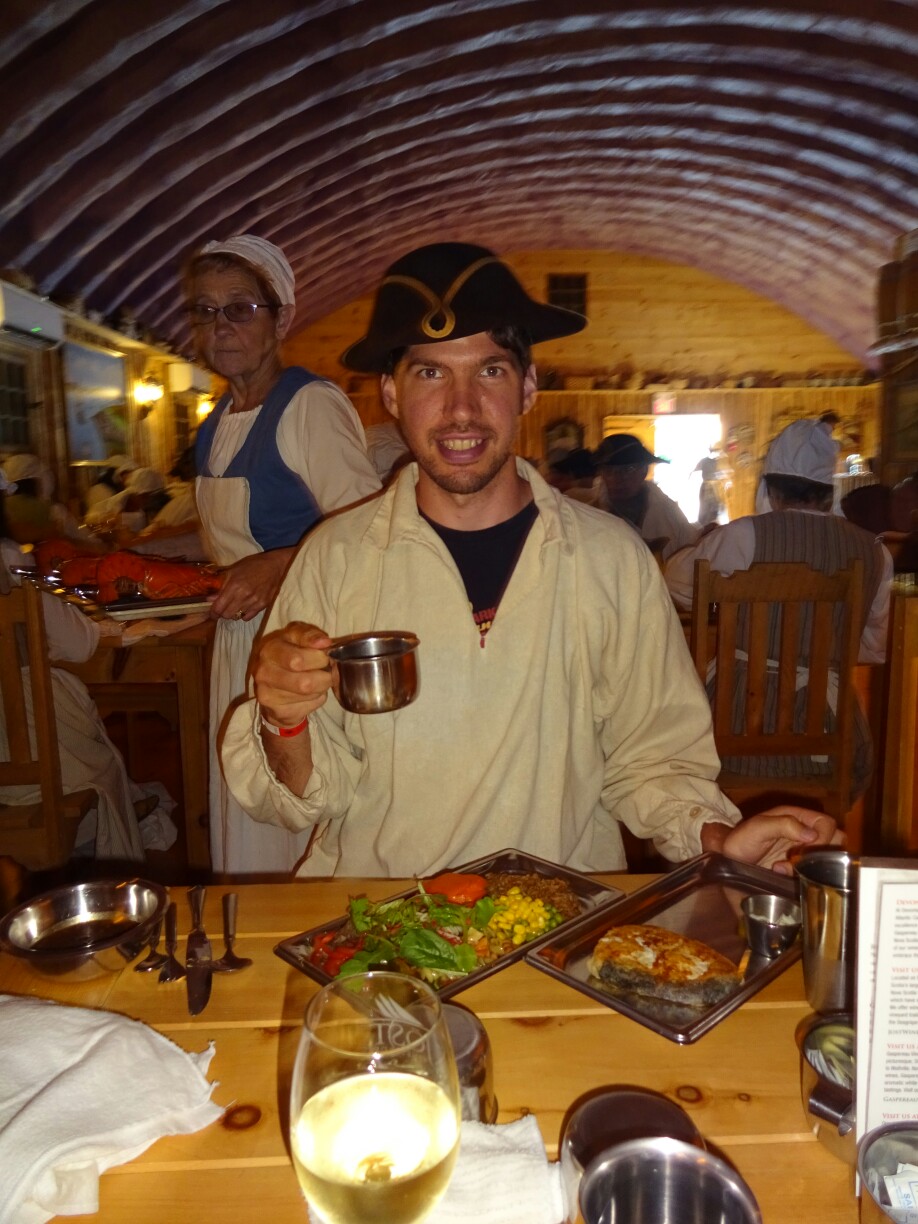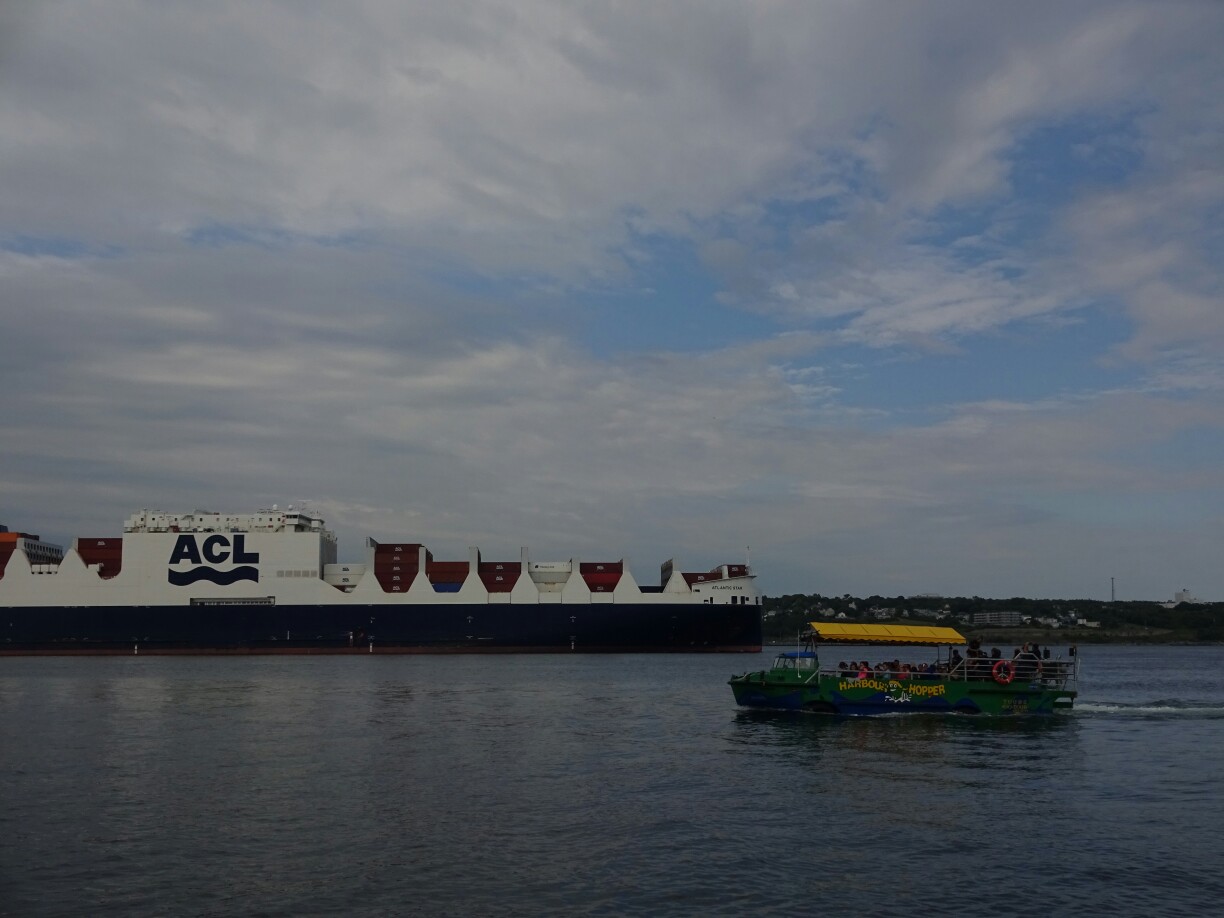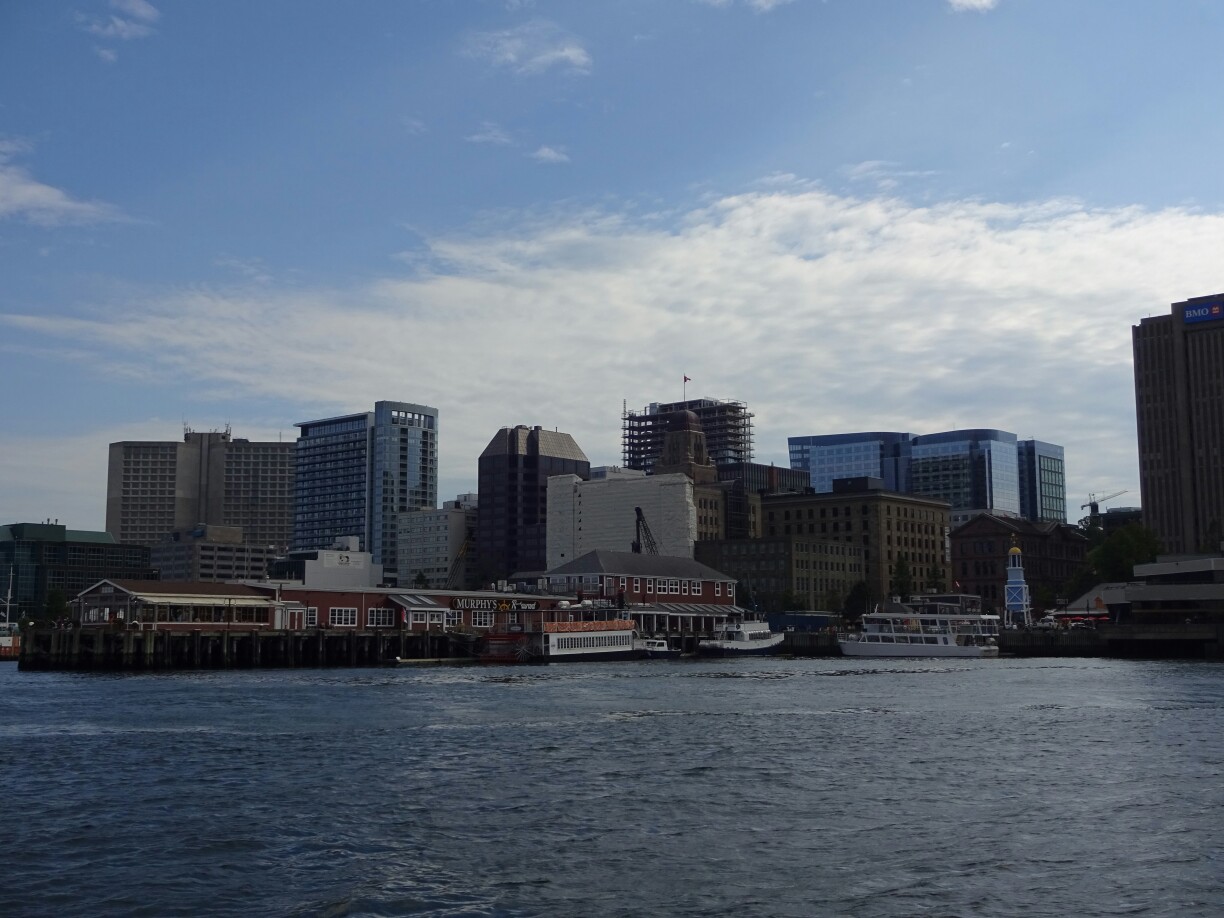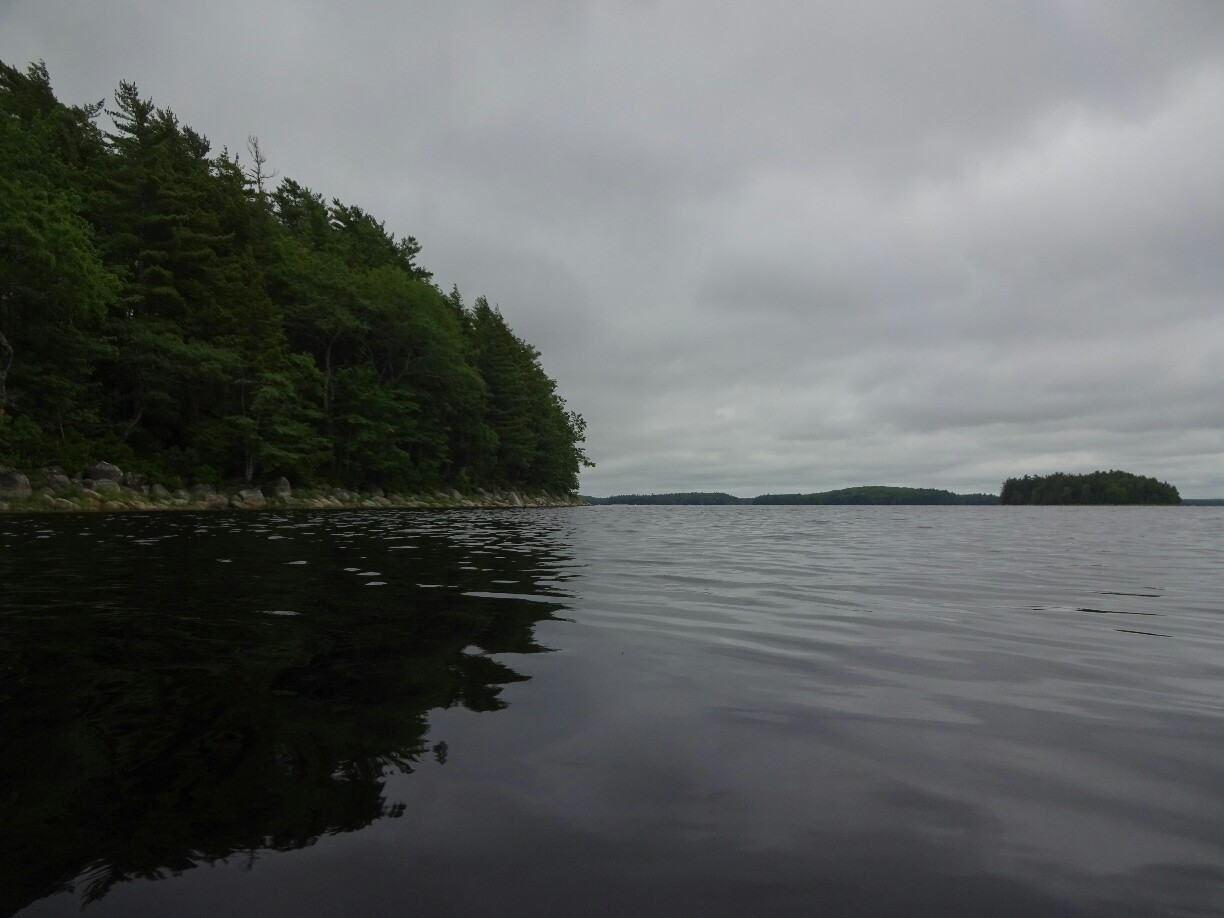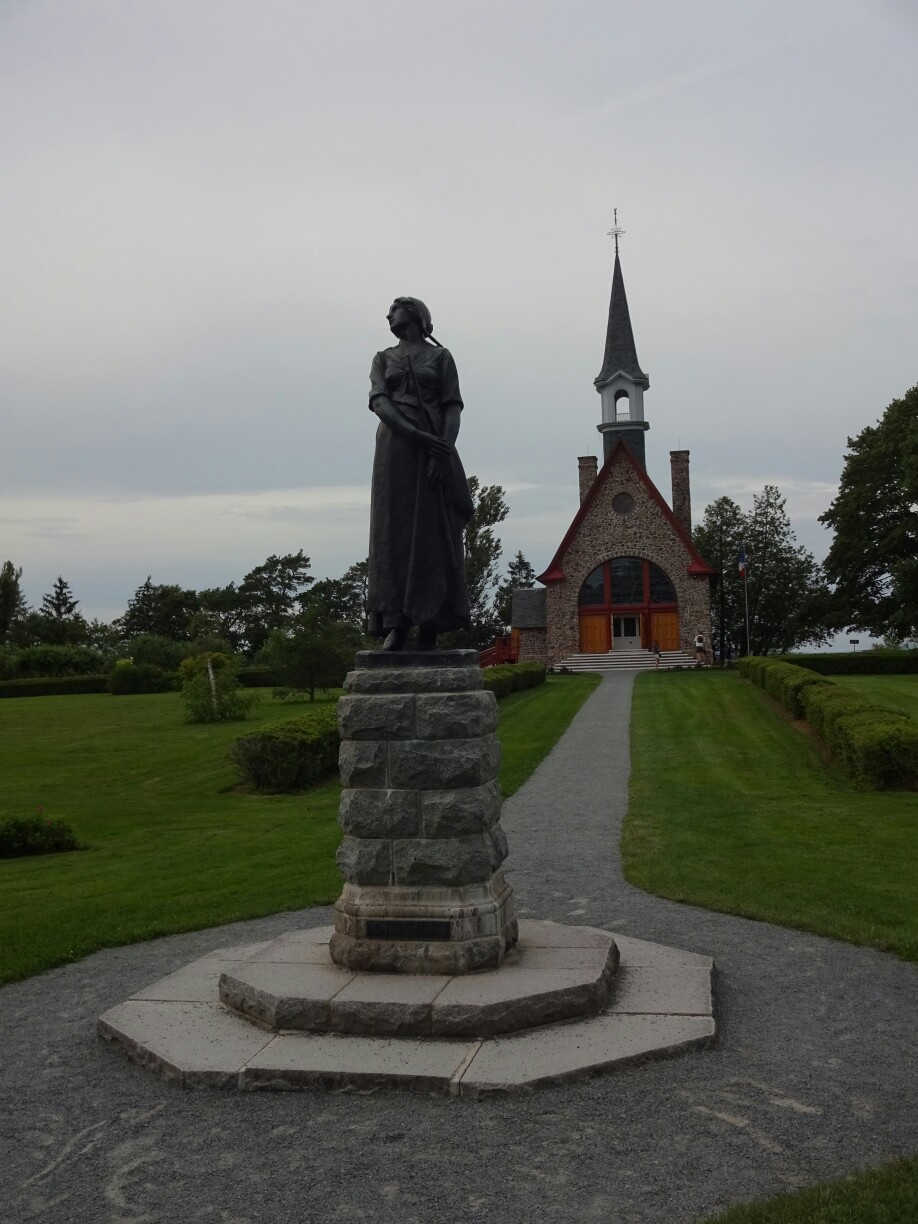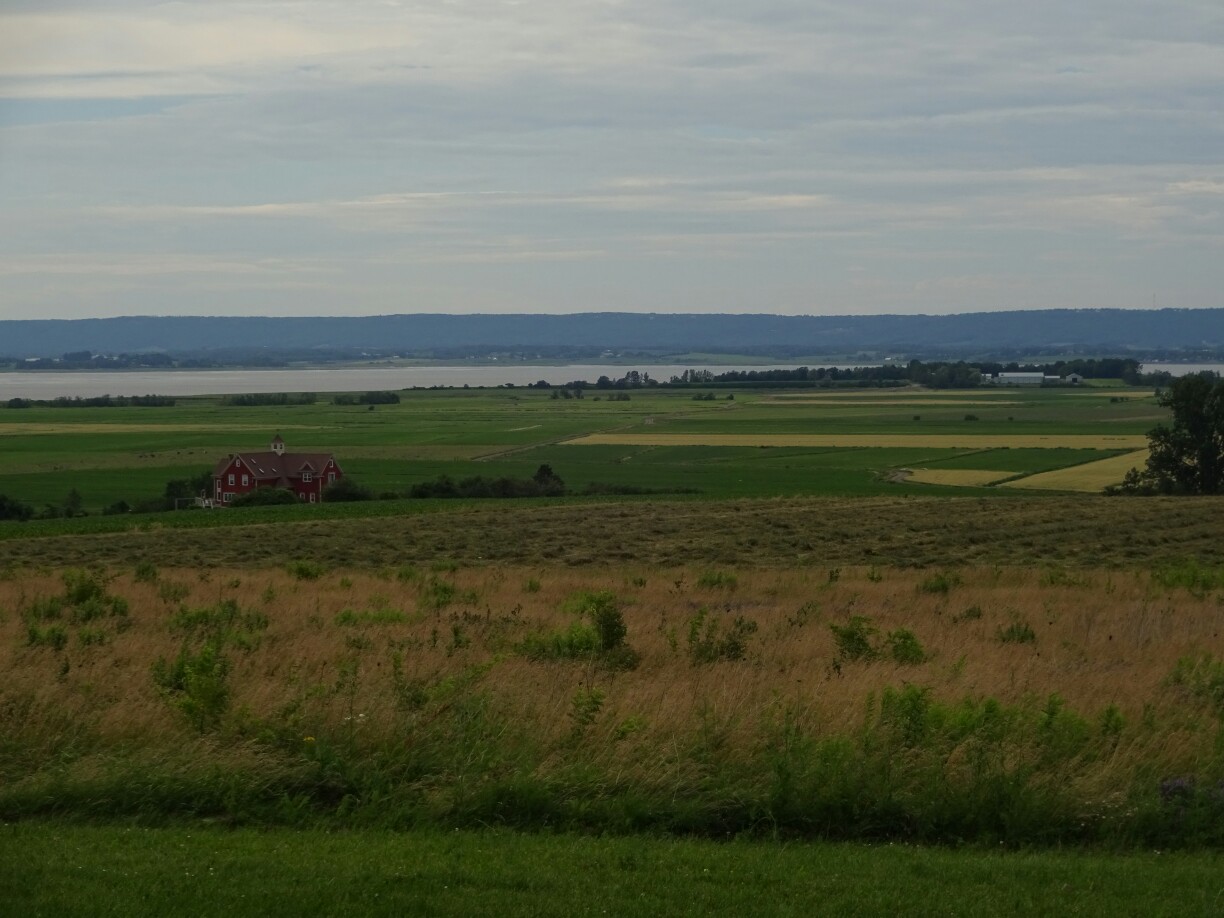I left Fredericton and followed the highway back into Nova Scotia. I still had a day to spare before my friend Eiko was coming, so I decided to make a stop over at the “Five Islands Provincial Park”. By the time I had reached the park, the drizzle had stopped and I could set up my tent with a perfect view of the bay. Since it was still high tide, there was no point in going to the beach, as it was non-existent.

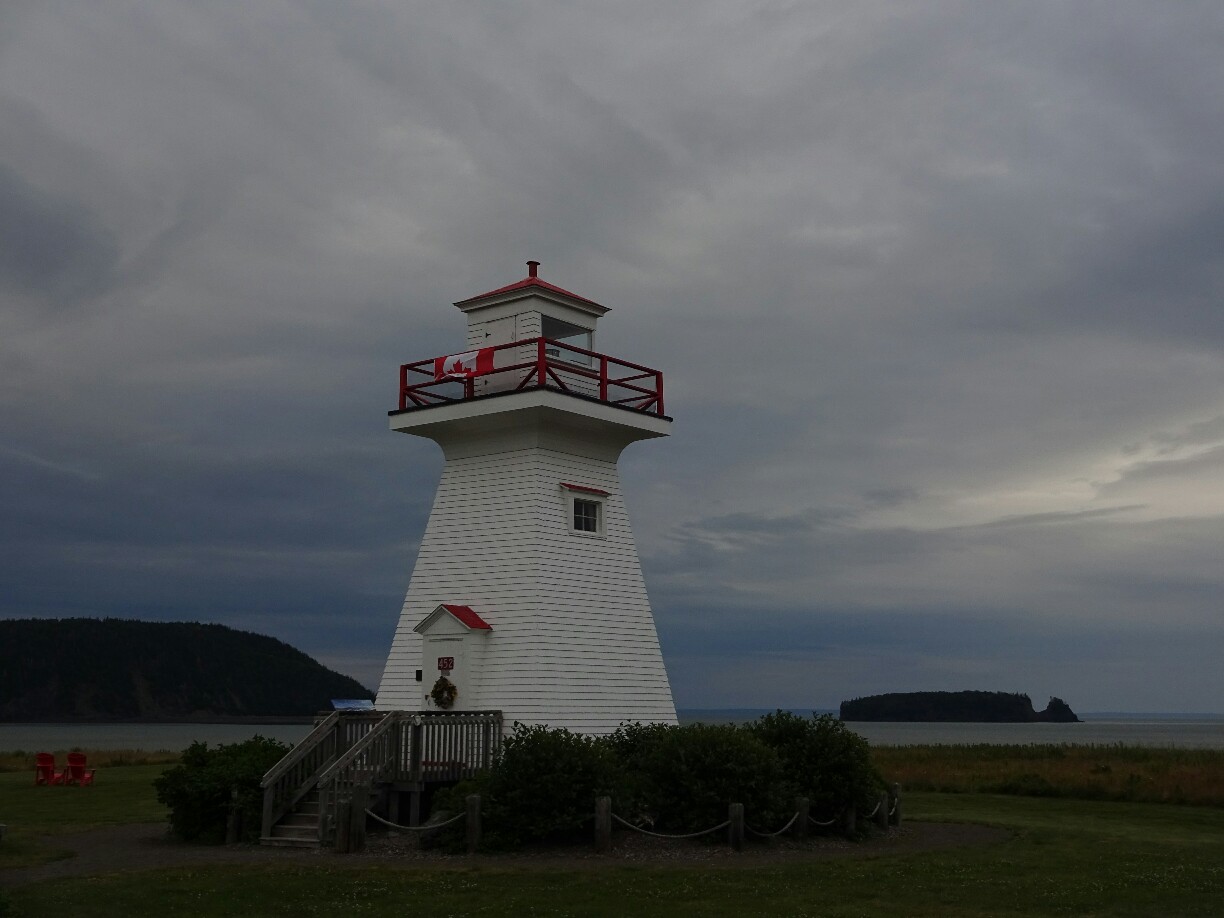
The next morning I packed up everything and headed to the beach. This area of the “Bay of Fundy” is famous for the numerous semi-precious stones that can be found between the high tides. They are deposited by the strong currents or fall down from the mineral-rich cliffs, which are slowly eroded by wind and waves. I did find a cool rock, but I didn’t know if it was just quartz or something more, so I left it there, hidden under a big rock, waiting for the ocean to reclaim it.


My next stop was also very specific to this area – tidal rafting! And it turned out to be one of my favorite things to do on the east coast. I had booked it with one of the biggest companies on the Shubenacadie River, which had everything perfectly organized. And timing is the key factor here! After everyone had put on their yellow rain gear (for wind protection) we headed to the water, where we could see the tidal bore, a small wave, coming up on the river.

We saw giant sandbanks disappearing within five minutes – a 12m difference between high and low tide means that the water level rises 1m per 30 mins on average, often even faster. For the next hour we were riding the up to 2m tall waves created by the tidal currents that pushed the water up and inland. It was a lot of fun and everyone got soaked! I couldn’t imagine how it would be with 5m waves, the highest ones that our guide had had in her four years of working here.
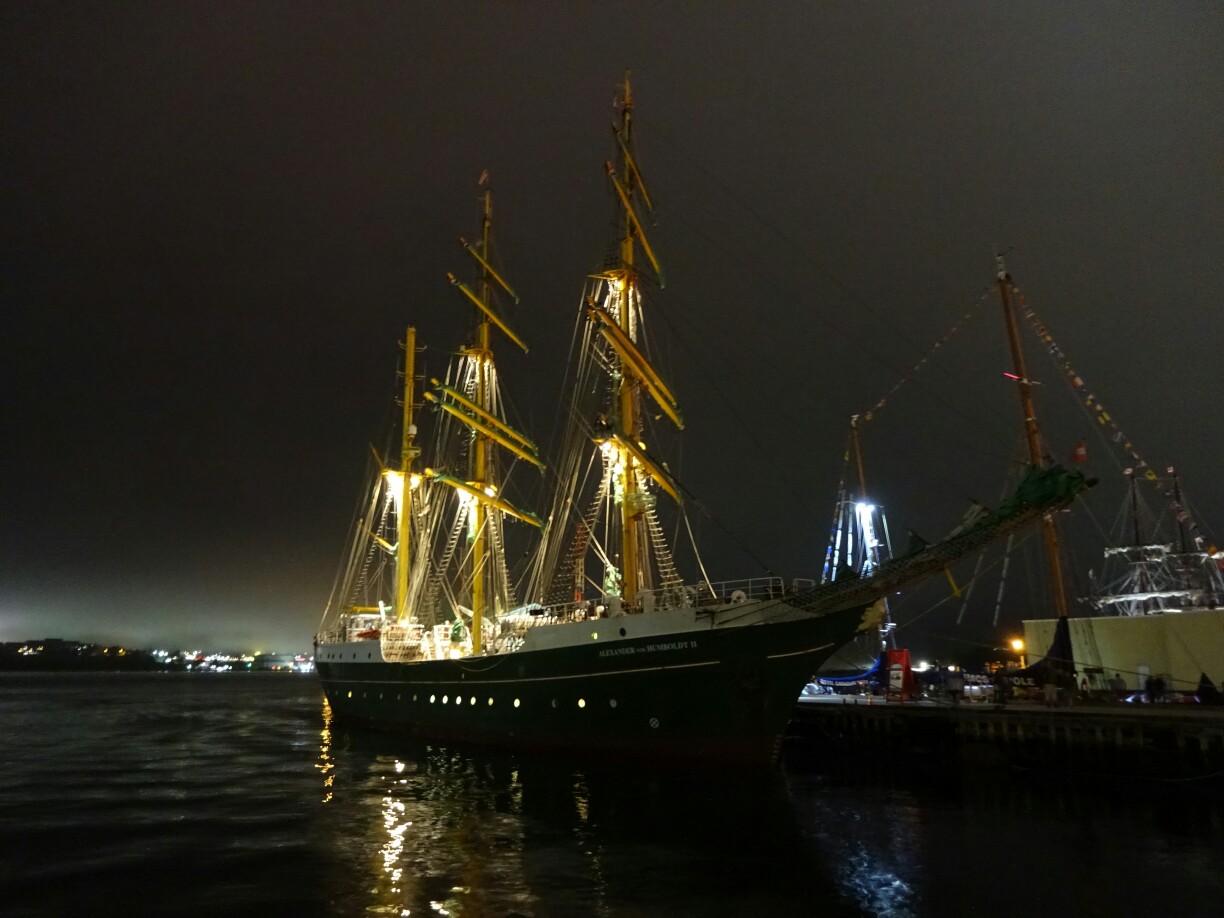
After a hot shower I drove back to Halifax, where Sarah had successfully defended her Master’s thesis. Together we had a look at the activities offered in the downtown area for the “Tall Ship Days”. The waterfront was full of famous ships, including the “Blue Nose II”, but all of them were already closed for the day. Instead we had a look at one of the busker shows, where a group of international street artists were playing with light and fire.

As Sarah had more time now, she also showed me the “Crystal Crescent Beach Provincial Park” the next day. It’s not too far from the city and offers hikes along the beautiful coastline. The big rocks reminded me a bit of “Peggy’s Cove”, just without the tourists. That might also have been due to the weather, which was quite foggy, compared to Halifax where we had left while it was still sunny. And as we returned to the city we left the fog behind.


All afternoon we walked around the waterfront and tried to get a closer look at the different ships. Most of them were open for a visit, but we didn’t feel like lining up for too long, so we only went onboard the “Blue Nose II”, where everyone was shuffled over the upper deck for a quick look. And after a huge serving of delicious fish and chips in Dartmouth, located on the opposite side of the bay, I drove out to the airport once again. This time it was for Eiko.
